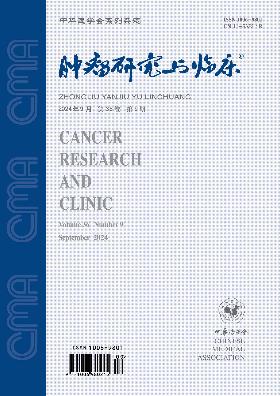儿童视神经胶质瘤自发性消退3例报告并文献复习
Q4 Medicine
引用次数: 1
摘要
目的探讨儿童视通路胶质瘤的自发消退现象,提高对视通路神经胶质瘤的认识。方法回顾性分析首都医科大学北京儿童医院2012年9月至2019年6月收治的3例视神经胶质瘤自发消退患者的临床资料。结果3例患者中2例为女生,1例为男生。中位发病年龄为4个月(3-5个月),中位肿瘤消退年龄为10个月(8-13个月);从发病到肿瘤消退的中位时间间隔为5个月(4-10个月)。一名患者伴有间脑综合征,另一名患者则伴有播散性转移。结论视神经胶质瘤的自发消退现象多发生在儿童早期。视神经胶质瘤患儿并发间脑综合征或颅内转移可能存在肿瘤消退的可能性,但自发消退并不意味着症状可以完全改善。关键词:视通路胶质瘤;儿童;自发回归本文章由计算机程序翻译,如有差异,请以英文原文为准。
Spontaneous regression of optic pathway glioma in children: report of three cases and review of literature
Objective
To explore the phenomenon of spontaneous regression of optic pathway glioma in children, and to improve the understanding of optic pathway glioma.
Methods
The clinical data of 3 patients with spontaneous regression of optic pathway glioma in Beijing Children's Hospital of Capital Medical University from September 2012 to June 2019 were retrospectively analyzed.
Results
There were 2 girls and 1 boy among the 3 patients. The median age of onset was 4 months (3-5 months), the median age of tumor regression was 10 months (8-13 months), and the interval median time from onset to tumor regression was 5 months (4-10 months). One patient was accompanied with diencephalic syndrome, and the other was accompanied with disseminated metastasis.
Conclusions
The phenomenon of spontaneous regression of optic pathway glioma mostly occurs in the early childhood. Optic pathway glioma pediatric patients complicated with diencephalic syndrome or intracranial metastasis may have the possibility of tumor regression, but spontaneous regression does not mean that the symptoms can be completely improved.
Key words:
Optic pathway glioma; Child; Spontaneous regression
求助全文
通过发布文献求助,成功后即可免费获取论文全文。
去求助
来源期刊

肿瘤研究与临床
Medicine-Oncology
CiteScore
0.10
自引率
0.00%
发文量
7737
期刊介绍:
"Cancer Research and Clinic" is a series of magazines of the Chinese Medical Association under the supervision of the National Health Commission and sponsored by the Chinese Medical Association.
It mainly reflects scientific research results and academic trends in the field of malignant tumors. The main columns include monographs, guidelines and consensus, standards and norms, treatises, short treatises, survey reports, reviews, clinical pathology (case) discussions, case reports, etc. The readers are middle- and senior-level medical staff engaged in basic research and clinical work on malignant tumors.
 求助内容:
求助内容: 应助结果提醒方式:
应助结果提醒方式:


